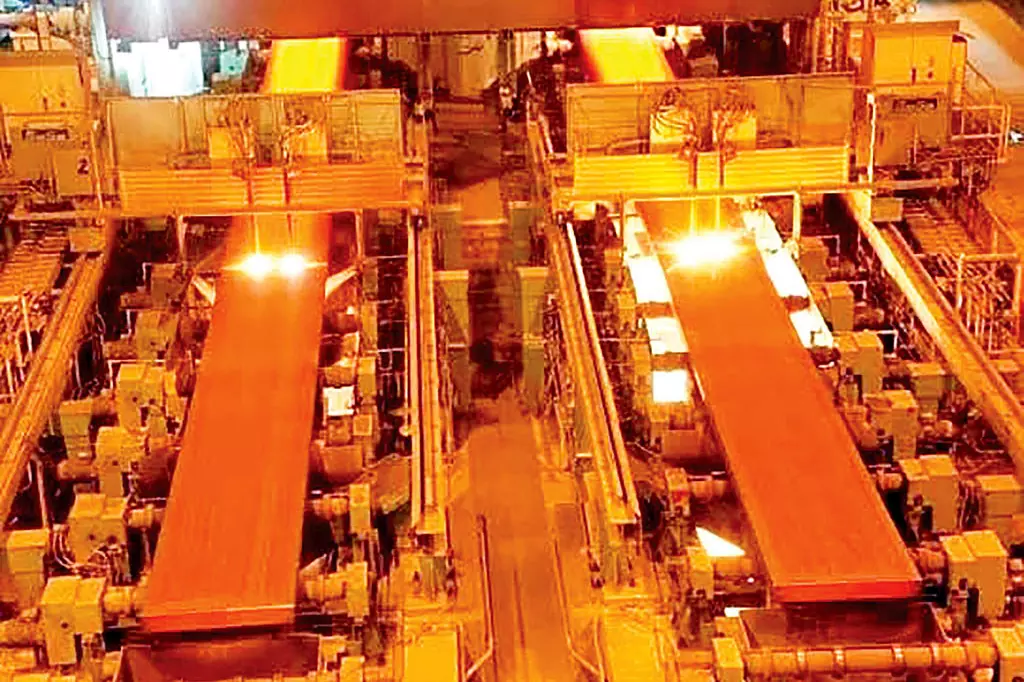Steel or steel is generally defined as follows:
Alloys based on iron with less than 2% carbon are called steel or steel .
The classification of steel is as follows:
Steels are divided into two general categories based on the alloys found next to iron
The first category is called simple carbon steel , the main and influential element of which is carbon. This category of steel has only carbon as an effective element in its alloy with iron
The second category is alloy steel , which is formed by adding some elements such as chromium to iron, which is called stainless steel or stainless steel, which have a high resistance to various types of corrosion and is currently implemented in the Iranian market. Steel railings This type of steel is used
The most important features of steel
The use of steel is widely used in the construction of various industries such as construction, infrastructure, tools, ships, trains, automobiles and most industrial machinery and equipment due to its high tensile strength properties and relatively low cost.
Regarding the strength of stainless steels, it is important to note:
The strength of steel increases sharply with the amount of dissolved carbon in the alloy, but on the other hand, this increase in strength reduces the weldability and increases the probability of failure (brittle steel)
What is stainless steel or stainless steel?
Stainless steel (stainless steel) is an alloy of steel whose main constituents are iron, chromium and nickel, in which the minimum mass percentage of chromium is 10.5% and the maximum mass percentage of carbon is 1.2%.
Stainless steel (stainless steel) due to its inactivation properties show excellent corrosion resistance. Stainless steels have this property due to the formation of a passive layer on their surface which is strongly bonded to the substrate and prevents further contact of the material with the environment. In order for this deactivation phenomenon to occur stably in steel, it is necessary that at least 10.5% of the material is chromium.
Stainless steels are divided into several categories:
Austenitic
Ferrite
Martensitic
Duplex
Austenitic
The largest group of the family is stainless steels. This group is one of the most popular and widely used stainless steels due to its properties such as ductility and high corrosion resistance. The cold rolling made on this group gives them good resistance. This group is 304 alloy, which is about 60% of the world’s stainless steel products of this type. Other capabilities of this group are the possibility of welding due to the low amount of carbon and sulfur in them, in fact, adding new elements to improve quality and The required properties of the alloy are provided
Grade 304:
Grade 304 (8-18) is an austenitic steel with at least 18% chromium and 8% nickel, which also has a maximum of 0.08% carbon. This grade is non-magnetic and can not be hardened by heat treatment. To obtain strength Higher tensile strengths should be used. 18% of the chromium in this alloy provides corrosion and oxidation resistance, and the metallurgical properties of this alloy are based on its nickel (8%), which increases the corrosion resistance of chemicals. Becomes
This grade is used due to its ability to resist acids in fruits, meat, milk and vegetables to produce all kinds of sinks, tables, samovars, coffee makers, stoves, refrigerators, steamers, etc., and also to produce appliances. Confectionery, cooking, cups, pots and dishes are used. Grade 304 is very suitable for dairy equipment. Milking machines, springs, homogenizers, sterilizers and tankers are all made of this alloy.
Grade 316:
In environments that require more corrosion resistance than grade 304, grade 316 is used, in which the carbon element must be at most 0.08% and nickel is slightly higher than 304. The index difference between 304 and 316 is the element molybdenum, which is added up to 3% to 316. Molybdenum increases the corrosion resistance of this grade against chemical corrosives, solutions and especially against chlorides, and molybdenum is one of the strongest alloying elements. To prevent corrosion, despite molybdenum, this grade can be used in environments exposed to sodium and calcium salts, hypochlorite solutions, phosphoric acids, and sulfide solutions and acids.

Grade 309:
It has more chromium and nickel to provide corrosion resistance properties as well as resistance to scaling at high temperatures.
Grade 310:
It has more than 309 nickel, so it has better resistance to scaling at high temperatures.
Grade 321:
Contains titanium to prevent the formation of chromium carbides in welding.
Ferrites
Until 1980, ferrites were less popular than other stainless steel groups due to their higher carbon content. Titanium or niobium, this group entered the market .
Grade 430 : The base grade is the ferrite group, which has a very high malleability and excellent atmospheric corrosion resistance.
Martensitic
The first group was stainless steels, which were examined due to poor acceptance of low carbon content. This group has the highest carbon content among other groups. On the other hand, this carbon content led to the strength of this group. Basically, martensitics are known as stainless steel tools, whose relatively low corrosion resistance has reduced their consumption in process cases. This group is used in making ordinary household knives up to razor blades. One of the reasons for choosing them in this regard, in addition to being stainless, is their high hardness and heat tolerance and the strength of martensitics are enhanced by the addition of molybdenum. Also, this group does not have good welding capability.
Grade 410: The base grade is this type and this grade is used for general use of corrosion and heat resistance. This grade is always magnetic and so-called gripping and can be annealed, used for cold rolling and shaping.
Duplex
Duplex has both austenitic and ferritic microstructures and is actually a combination of positive austenitic and ferritic properties. Duplex microstructure has high strength and resistance to stress corrosion, and other properties of duplexes are high chromium content (20.1 to 4.25%) and lower nickel content (1.4 to 7%) than austenitics. Lower nickel content of duplexes makes their price more balanced to balance this group and increase corrosion resistance. Molybdenum (0.4 to 4%) and nitrogen are added to them. Nitrogen also increases the strength and composition. Chromium and molybdenum together increase the corrosion resistance of cavities.
What is the letter L after the name stainless steel like 316 L ?
The letter L, which stands for Low carbon, indicates that the carbon content of the alloy has been reduced to less than 3.3%. This low amount of carbon causes a protective oxide layer to remain on the surface after welding.
Can stainless steel work at high and low temperatures?
Yes, stainless steel has very good resistance to high temperatures up to 1000 degrees Celsius and very low to minus 200 degrees Celsius.
Steel CK45 What is steel?
A simple steel with a medium carbon content of about forty-five percent, which is sometimes used to make the pump shaft due to its low price, is not resistant to rust and corrosion due to its low chromium content.
What are the characteristics and applications of stainless steel?
Excellent ductility
High toughness
Good scaling resistance
Creep at high temperatures
Also, the advantages of using stainless steel pipes, which are the most practical parts made of stainless steel, are as follows:
light weight
Durable
Convenient machining
Easy to clean and requires little maintenance
High corrosion resistance
Recyclable and environmentally friendly
Plain carbon steels are divided into four categories
- Low Carbon Steel with a maximum of 0.15% carbon
- Partial carbon steels (ordinary), Mild Steel, with 0.15-0.30% carbon
- Medium carbon steel with 0.50-30% carbon
- High carbon steels, High carbon steel, with 0.1-50% carbon
